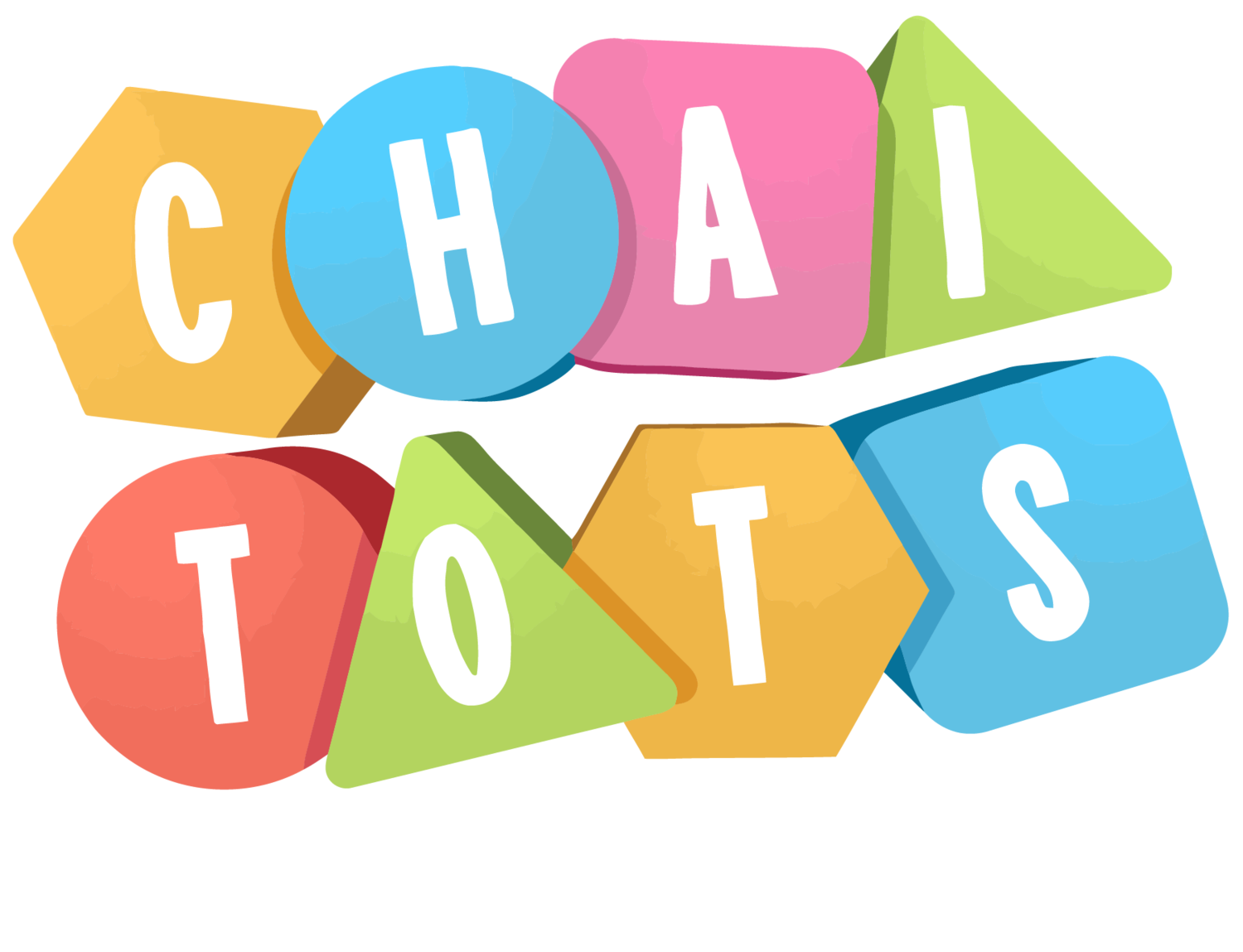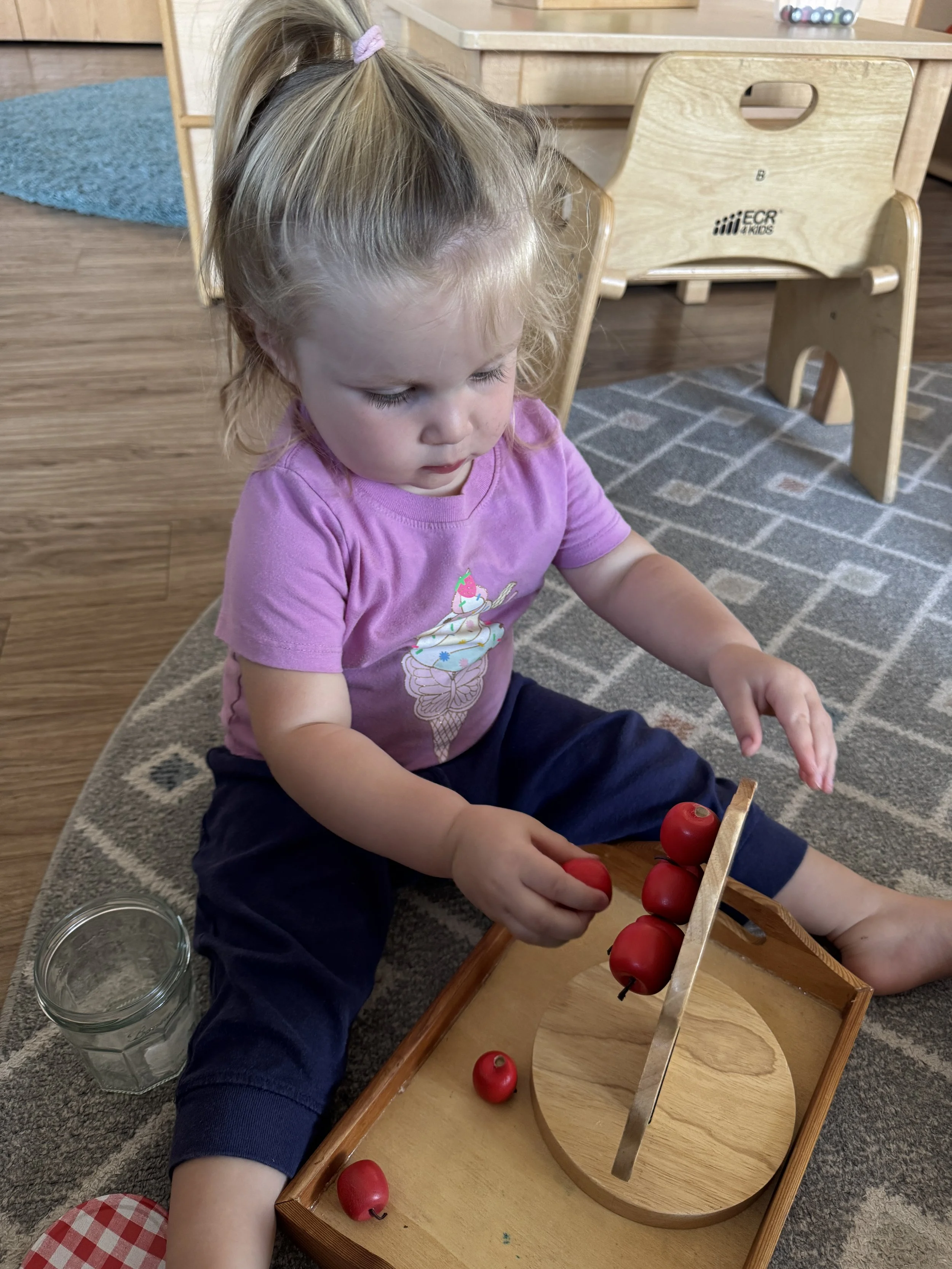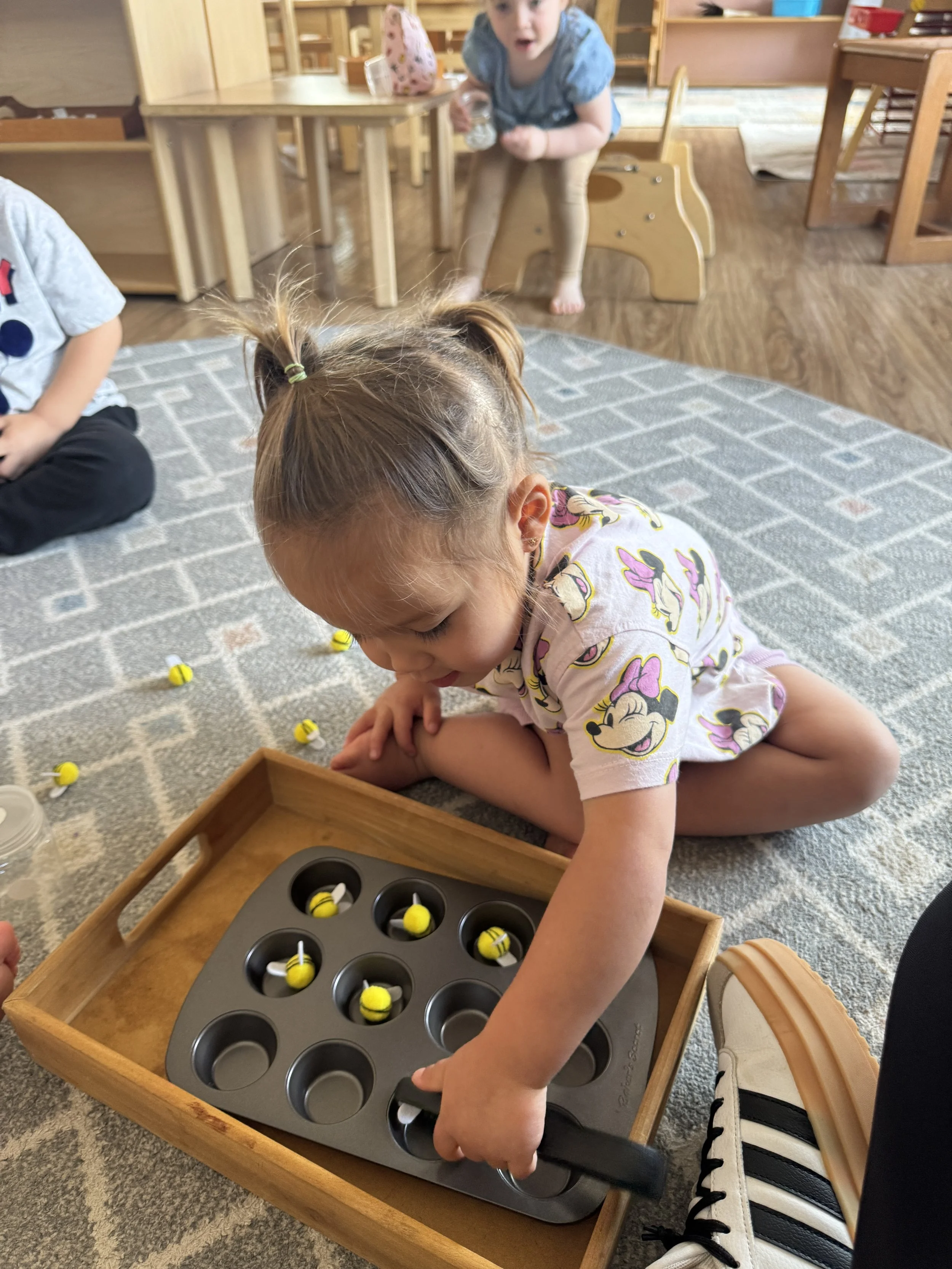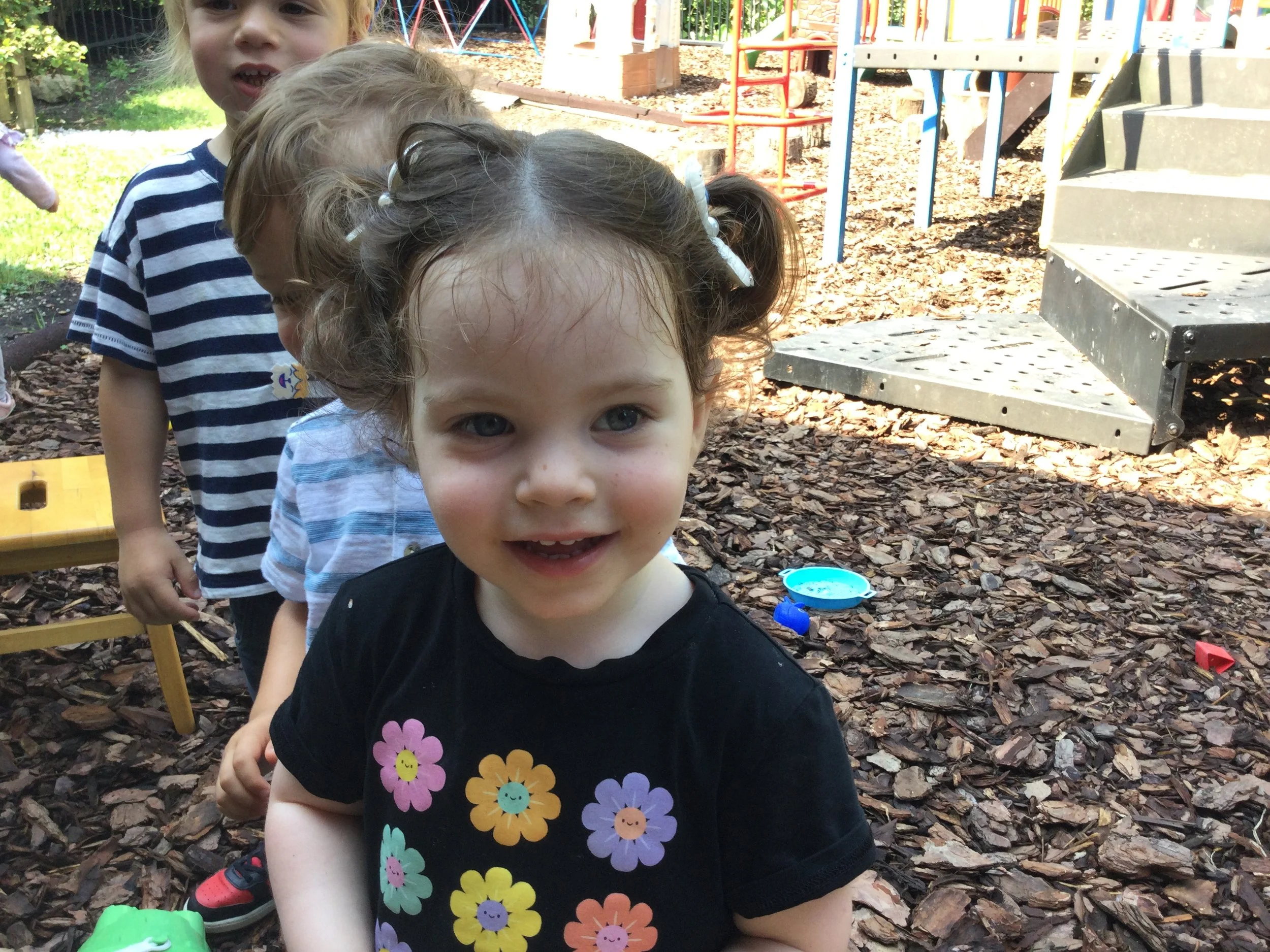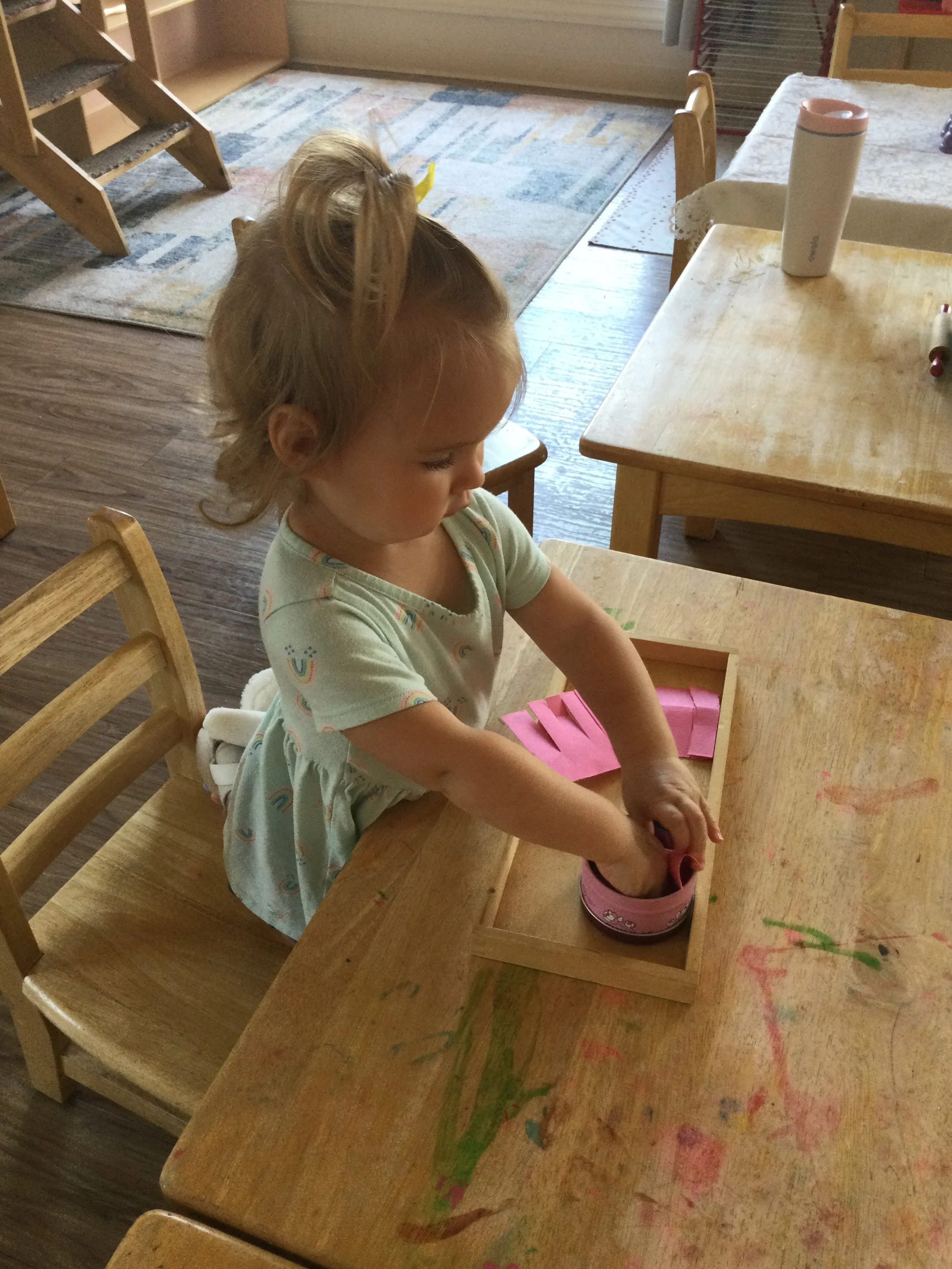Hello and Shana Tova!
This week’s Peek at the Week is all about simplicity in the Montessori practice and the idea of “less is more.”
It may feel like we don’t have a lot of works out at one time in the classroom and this is done very intentionally. A simple and organized classroom allows toddlers to engage with a carefully selected set of materials, promoting concentration and a deeper understanding of concepts. We also have each child in mind as we select work for the shelves, making sure that we have something for each of our wide range of abilities and interests.
Having a clear and organized space also helps so much for the ease of maintenance. Our shelves are loosely categorized so that Morahs and children can easily put things back where they belong. When new work is put on the shelves, the Morahs can present a lesson to the children on the whole cycle of the work. This includes putting the work back on the shelf the way it was found. This allows for the next child to use the materials to be able to complete their work cycle from start to finish.
We give lessons based on the Montessori SHOW method.
Slow
Hands
Omit
Words
Demonstrate how the work is done SLOWLY, ideally reaching your hands around your toddler from behind and using the hand over hand method when appropriate.
Best practice is to use as few words as possible, and simply show the child the steps to the activity.
There are many ways you can incorporate more simplicity and the SHOW method at home with your toddler. Try taking several of the less used toys and putting them into storage for a couple of weeks, then as your child tires of what’s available, you can reintroduce the stored items. This helps see what your child is really interested in and what they might have outgrown. Bonus: you have less clutter and less clean-up to manage!
Kitchen activities are a great way to demonstrate the SHOW method. Give your child a safe knife to cut their own grapes or bananas into slices. Bonus: take some of the work off your own plate and allow them to be a part of the process; it usually makes them more invested in trying new things!
Simplicity in a toddler Montessori classroom aligns with the philosophy of respecting the child, fostering independence, and creating an environment that supports optimal learning and development. It allows toddlers to thrive in a space that is carefully designed to meet their unique needs and abilities and as we enter into this new year, it is a beautiful time to foster this concept and growth!
Gmar Chasima Tova, May we be sealed for a good sweet year!
Morahs Megan, Sarah, and K
